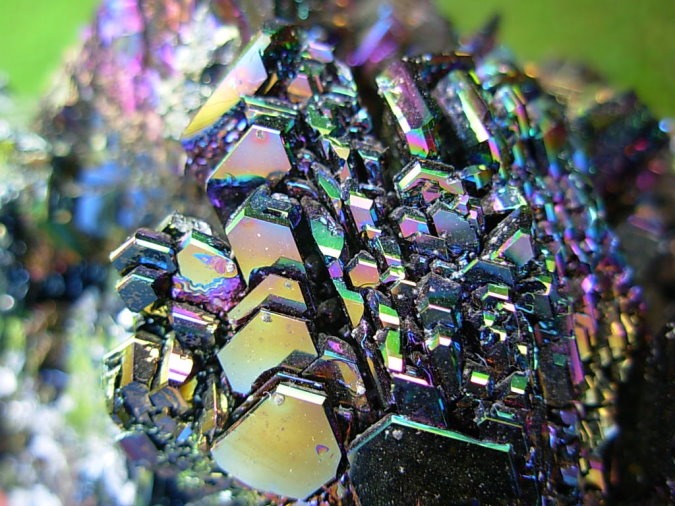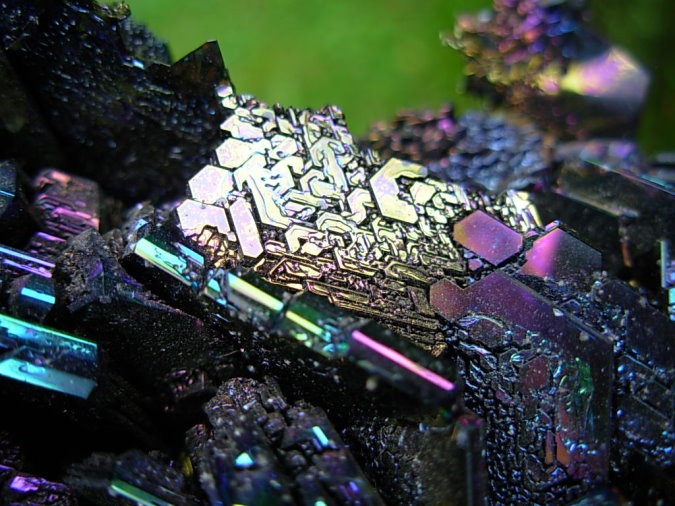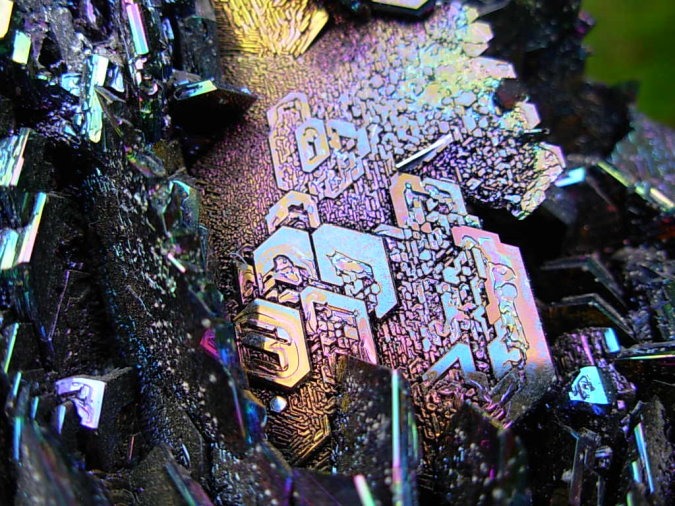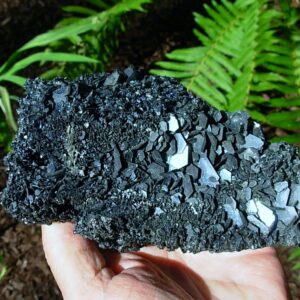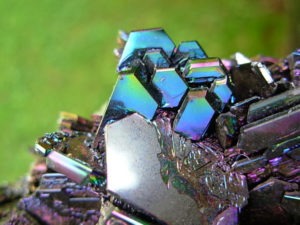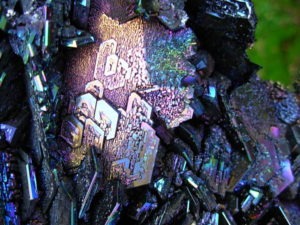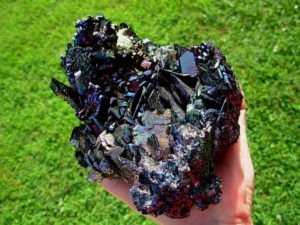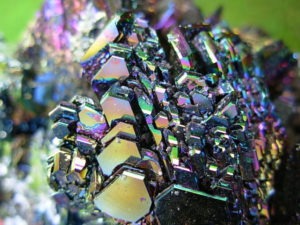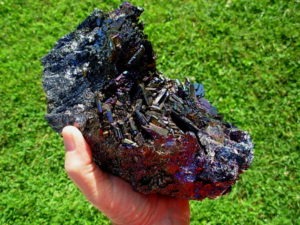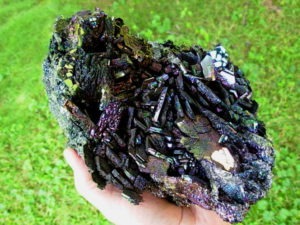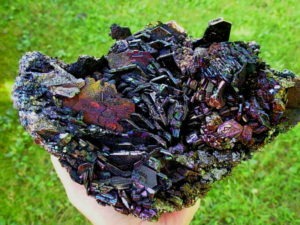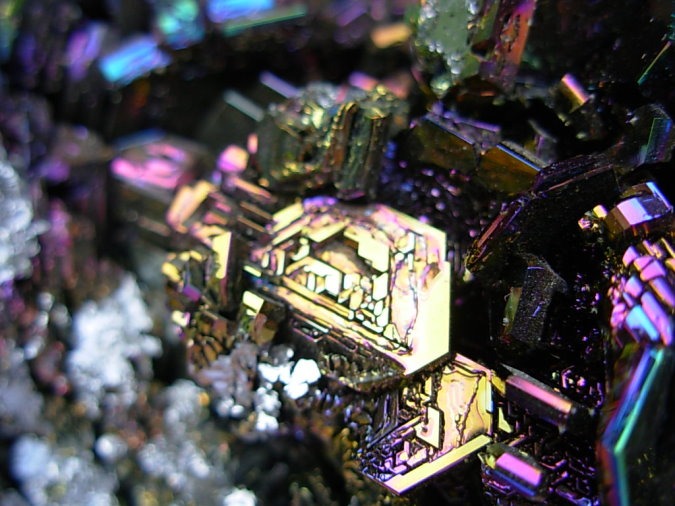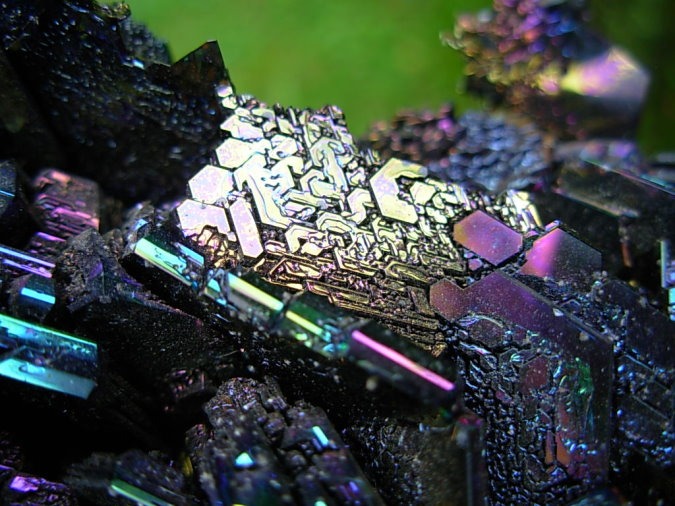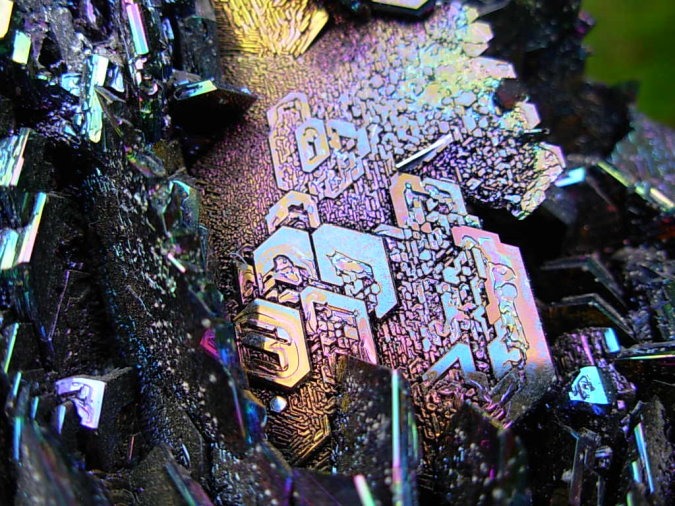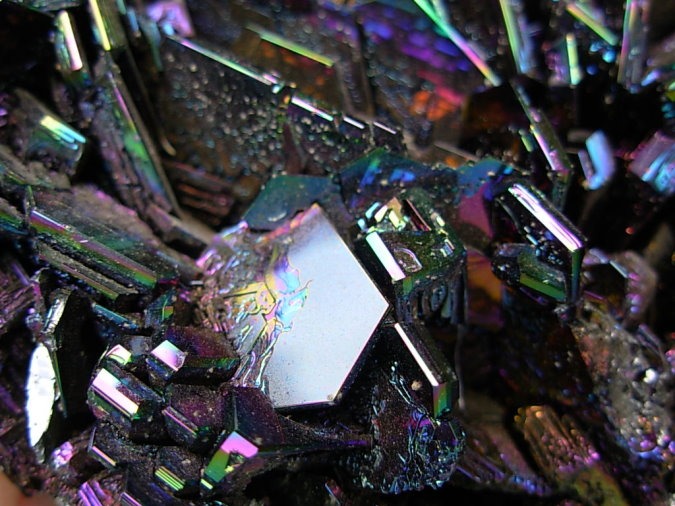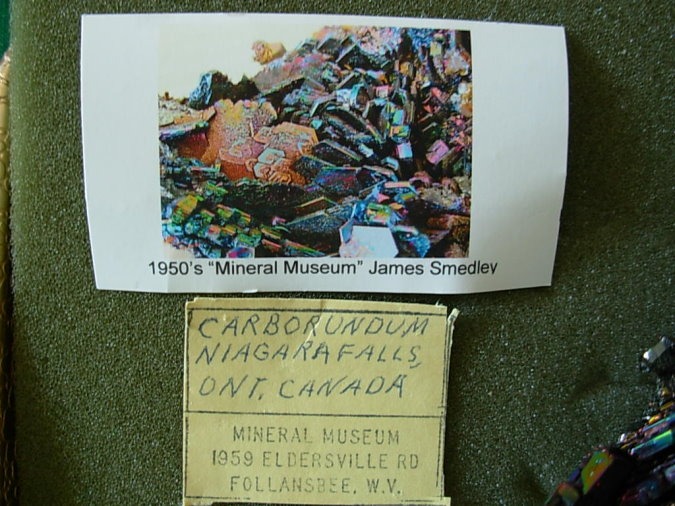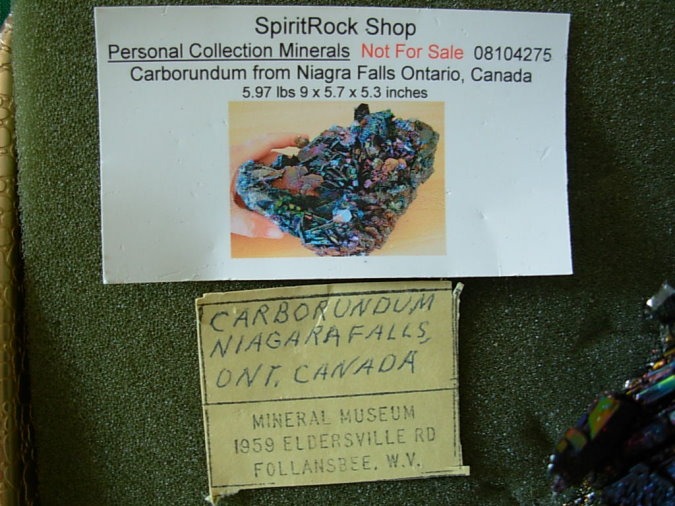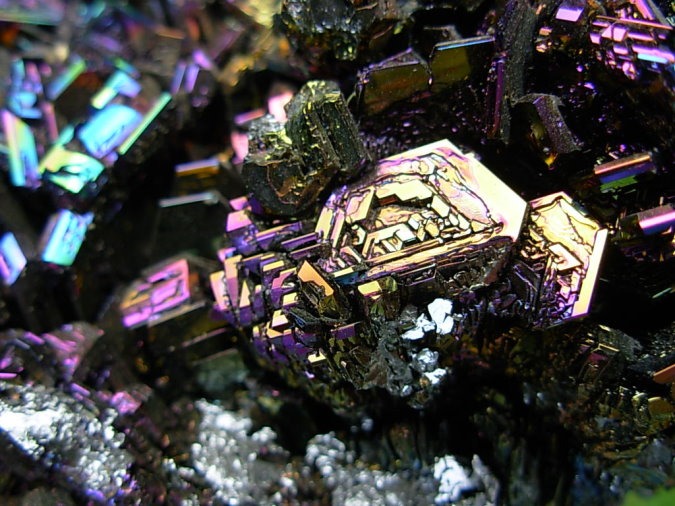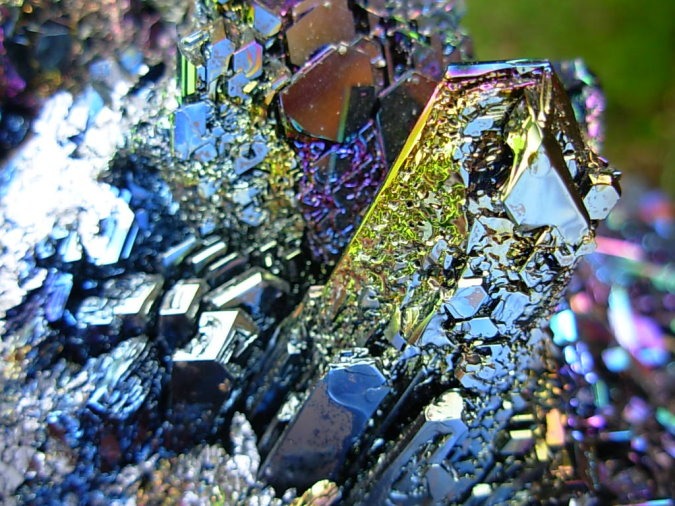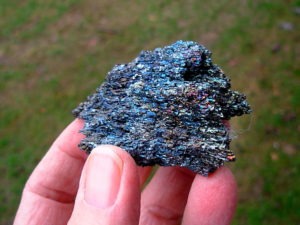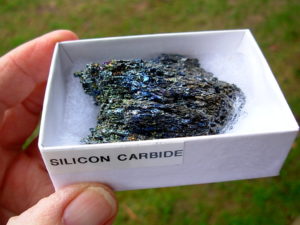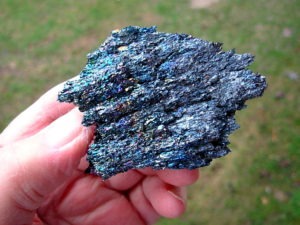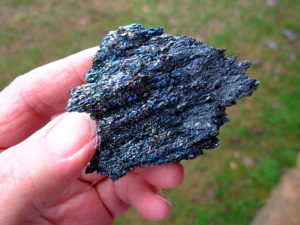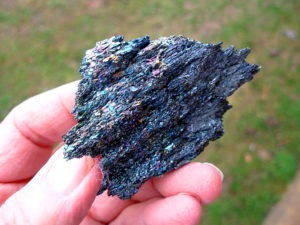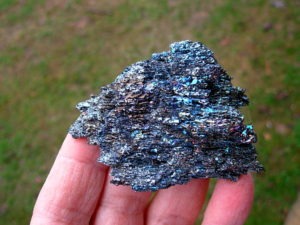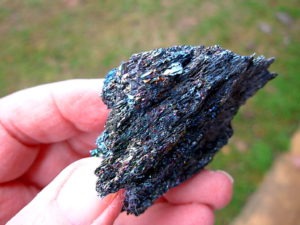Carborundum
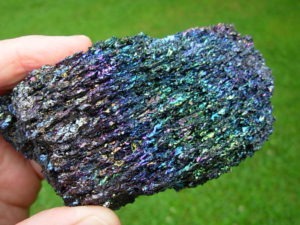 Carborundum is actually the worlds very first artificially produced mineral. In the mid 1880’s an inventor/scientist named Edward G. Acheson, who had worked as assistant manager of European interests for Thomas Edison, started his own experimental laboratory in Monongahela City, Pennsylvania. He had a crazy notion that he could produce man made diamonds by dissolving carbon into molten corundum (natural aluminum oxide) with intense heat from electrical furnaces. His experiments failed to produce diamonds of course, but he actually produced a substance that proved to be second only to diamonds in hardness and abrasive ability. Since this product came from a compound of Carbon and Corundum, he named it “Carborundum”. Years later a chemical analysis determined the substance to actually be silicon carbide.
Carborundum is actually the worlds very first artificially produced mineral. In the mid 1880’s an inventor/scientist named Edward G. Acheson, who had worked as assistant manager of European interests for Thomas Edison, started his own experimental laboratory in Monongahela City, Pennsylvania. He had a crazy notion that he could produce man made diamonds by dissolving carbon into molten corundum (natural aluminum oxide) with intense heat from electrical furnaces. His experiments failed to produce diamonds of course, but he actually produced a substance that proved to be second only to diamonds in hardness and abrasive ability. Since this product came from a compound of Carbon and Corundum, he named it “Carborundum”. Years later a chemical analysis determined the substance to actually be silicon carbide.
Acheson and a group of investors from Pennsylvania started the “Carborundum Company” (he liked the sound of the name) in 1891 in Monongahela City. They produced a line of silicon carbide abrasives. In 1893 Acheson wanted to move to the Niagara Falls area and utilize the cheaper hydro-electric power available. Andrew Mellon financed the move and in return the Mellon family retained 20 percent ownership in the company throughout the next century. The Niagara Falls Carborundum Company plant opened in 1895 with its newly built 1000 horsepower furnace (746 KiloWatts). This new production ability was supported by and fueled by massive demands for abrasives that were needed for production of the finely ground and machined parts required by American Industries. The Carborundum Company was expanding. In 1899 Acheson opened his first international company across the Niagara Falls in Canada The slogan "Illegitimi Non Carborundum"--often translated as "Don't Let the Bastards Grind You Down" --helped make the Carborundum Company a household name during WWII
Carborundum also was the source for graphite lubricants. Acheson discovered that when “Carborundum” (silicon Carbide) was superheated to 7,500 degrees Fahrenheit, the silica vaporizes and leaves behind artificial graphite. The Carborundum specimens that are collected are manufactured in blast furnaces at abrasive factories. Most pieces are small iridescent crystalline structures that are later crushed down to produce graded grit. One may rarely find an old stock specimen that has been allowed to fully produce some stunning crystalline plates with detailed geometric patterns on the surfaces of the plates…these are the collectors most highly treasured specimens. These types of specimens were most commonly available in the 1940’s to the early 1950’s.
For more information on the Carborundum Company or Mr. Acheson's career we have provided the links below
http://www.referenceforbusiness.com/history2/89/Carborundum-Company.html
Exceptional Carborundum Specimens show Amazing Geometric Crystalline Plate Formations
Item # CARB08104275
Exceptional XL Rare Carborundum Old Stock from Niagara Falls, Ontario, Canada

This exceptional Rare Old Stock Specimen was a centerpiece cabinet display (not for sale) in the old "Mineral Museum" in Follansbee, West Virginia. The museum was operated by the respected rockhound Jim Smedley who made his collections during the 1950's into the early 1960's. Jim wrote some excellent articles in the Rocks and Minerals magazine during those years detailing his family cross country and foreign country rock collecting trips filling the trunk of his old Studebaker with as many specimens as the car would allow. We were lucky enough to obtain some specimens from the old "Mineral Museum" collection from Jim's daughter Jeanne. She told us that everyone who came into the Mineral Museum was awestruck by this piece. We kept most of the specimens we got for our personal collection. This is one magnificent piece from our Personal Collection that we decided to share with our customers! (specimen comes with original Mineral Museum ID tag) This specimen came from Niagara Falls, Ontario, Canada
Specimen weighs 95.7oz or 5.98lbs (2.713kg) and measures 8.4 x 5.7 x 5 inches (20.9 x 14.5 x 12.8cm)
Item # 2CARB04192701
Carborundum Old Stock from Niagara Falls, New York
$24.00

This large Old Stock Moissanite (Carborundum) man made crystal specimen is in fantastic condition with exceptional rainbow color flash. This specimen came from one of the furnaces of The Carborundum Factory at Niagara Falls, New York. It is rare to find Niagra specimens like this. Most of what is available now is imported from China.
(This piece is much prettier in person than the these photos taken outdoors on an overcast day show)
This piece weighs 2 oz or 0.125 lb (57g) and measures 2.78 x 1.9 x 1 inches (70 x 48 x 25mm)

